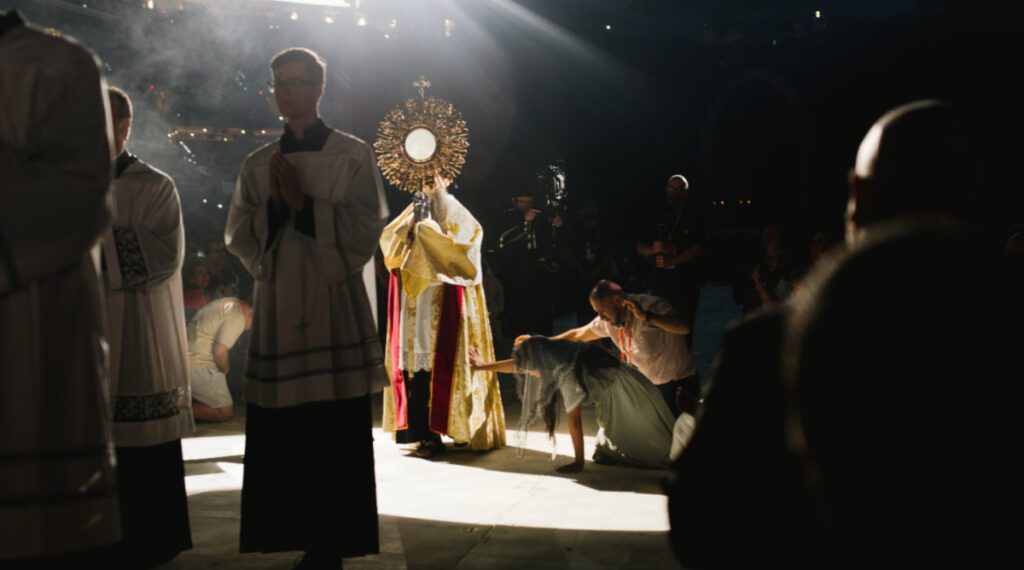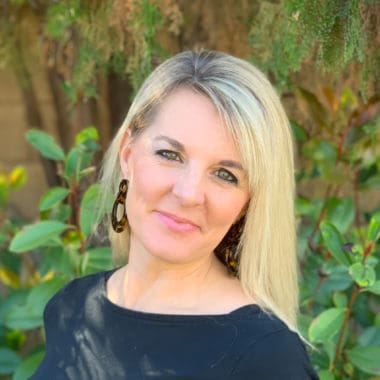I’m a slow processor.
So put this introvert (admittedly an outgoing introvert, who loves people) in a place with 50,000 other Catholics—full of sights and sounds and experiences and encounters, and it will be a long time before I decompress enough to grasp fully, much less articulate, the significance of the Eucharistic Congress.
I returned home yesterday after spending four wonderful days there with the team of the Avila Foundation. I know that after more time and more reflection, I’ll have better insight into this historic moment. But I’ll offer some thoughts now, while the memories are fresh and the words are flowing.
A Church That Has Lost Much
On Christmas, 1969, Joseph Ratzinger broadcast a lecture, “What Will the Church Look Like in 2000?” He said then, “From the crisis of today the Church of tomorrow will emerge—a Church that has lost much. It will become small and will have to start afresh more or less from the beginning.”
“But,” he added, “in all of the changes…the Church will find its essence afresh and with full conviction in that which was always at its center: faith in the triune God, in Jesus Christ, the Son of God made man, in the presence of the Spirit until the end of the world. In faith and prayer it will again recognize its true center, and experience the sacraments again as the worship of God…”
What Ratzinger spoke of—this small, and as he refers to her later, “poor” and “meek” Church—this is the Church today.
This is the remnant.
We are the remnant.
We are the ones who watched things crumble and said, sadly but staunchly, “To whom shall we go?” (John 6: 68).
We have lived through bad things and will, perhaps, see far worse. But God has convinced us through His love and faithfulness that He is the One Thing Necessary and has given us—for our sake and for the sake of others—the grace to remain, or maybe, to return.
The Remnant of My Flock
Today’s (7/21) reading from Jeremiah tells of the Lord gathering our humbled, tested, and tired hearts back to himself—and back to each other:
“I myself will gather the remnant of my flock
From the lands to which I have driven them
And bring them back to their meadow;
There they shall increase and multiply.” (Jer 23: 1-6)
This Eucharistic revival, the gathering of the remnant (and we must remember, it is for the sake of our sending) is one of dead things coming back to life. And bringing us back not just to Eucharistic faith but bringing us back to life. It is God doing what only He can do — breathing His own life back into what was already dead. We have seen dead dioceses, dwindling religious orders, closed schools, empty parishes, and abandoned convents. But it is our hearts most of all that have felt brittle and barren, achingly empty, and frighteningly alone. It is our hearts most of all that have needed resuscitation. This revival is our own chance to breathe again, to be whole again.
The Remant Becomes A Seamless Garment
What I witnessed last week was a Church being rehabilitated, a Church learning to walk again. And learning to walk as one. It was a Church with long, flowing habits of many colors with glowing faces. It was a Church in clerics. It was a Church of seminarians and students and seekers. It was a Church in strollers, pushed by younger mothers, tender shoots from sturdy stumps. Really, it was many small remnants being brought together and in the process of being woven wondrously into a seamless garment, streaming over a city and reaching out to the world.
The symbolism of the seamless garment (John 19:23) is rich in priestly meaning, but this Congress had a bridal tone and I also see it as a bridal veil rippling over the wedding feast. It is mysterious and beautiful.
A seamless garment is a thing of wholeness. It is complete. It is healed. It is restored. It is undivided in itself. It is integrated—in all of its messiness, in all of its story, in all of its pain —it is one thing. It is forbidden to tear a seamless garment (Exodus 28:32, John 19:24) because its unity is so very sacred.
Oneness is one of the four marks of the Church – the first, in fact. But the Church is one not because it decides to be one. It is one because it is in Christ. It is one because it is Eucharistic, The Church is one because it has found, as Ratzinger said it would, its essence.
And our hearts, too, have found their unifying still point.
As I worshiped with 50,000+ of you, before the Blessed Sacrament, gathered in our “meadow”, the quiet thunder of our voices was in unison. It was a foretaste of the perfect unity of heaven.
May our oneness–both collectively and interiorly– grow into something truly seamless, and may it be an answer to His prayer:
That they all may be one.
John 17:21
______________________________________________________________
Photo by Jacob Bentzinger in partnership with the National Eucharistic Congress.





